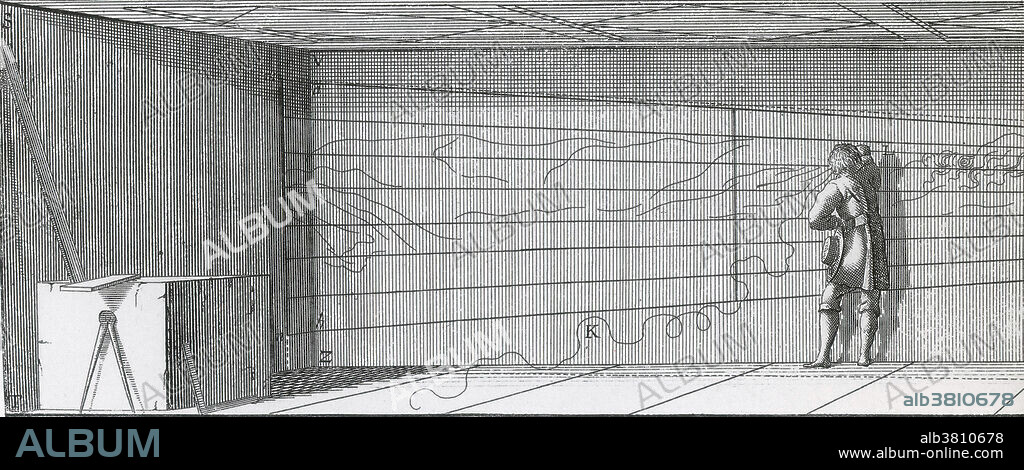alb3810678
Anamorphosis Mural, 1646

|
Añadir a otro lightbox |
|
Añadir a otro lightbox |



¿Ya tienes cuenta? Iniciar sesión
¿No tienes cuenta? Regístrate
Compra esta imagen

Título:
Anamorphosis Mural, 1646
Descripción:
Ver traducción automática
Captioned: Making an anamorphic mural engraving by Jean-Francois Niceron, 1646. Anamorphosis is a distorted projection or perspective requiring the viewer to use special devices or occupy a specific vantage point to reconstitute the image. There are two main types of anamorphosis: perspective (oblique) and mirror (catoptric). Examples of perspectival anamorphosis date to the early Renaissance (15th century). Examples of mirror anamorphosis were first seen in the late Renaissance (16th century). With mirror anamorphosis, a conical or cylindrical mirror is placed on the drawing or painting to transform a flat distorted image into a three-dimensional picture that can be viewed from many angles. The deformed image is painted on a plane surface surrounding the mirror. By looking uniquely into the mirror, the image appears undeformed. This process of anamorphosis makes it possible to diffuse caricatures, erotic and scatological scenes and scenes of
Crédito:
Album / NYPL/Science Source
Autorizaciones:
Modelo: No - Propiedad: No
¿Preguntas relacionadas con los derechos?
¿Preguntas relacionadas con los derechos?
Tamaño imagen:
5100 x 2078 px | 30.3 MB
Tamaño impresión:
43.2 x 17.6 cm | 17.0 x 6.9 in (300 dpi)
Palabras clave:
1646 • ANAMORFOSIS • ARTE • CIENCIA • CURIOSO • DIAGRAMA • DIBUJO • DISTORSIONADA • FRANÇOIS • FRESCO • GRABADO • HISTORIA • HISTORICO • ILUSTRACION • IMAGEN • JEAN • LINEAL • MURAL • OBLICUO • OBRA DE ARTE • PERCEPCION • PERSPECTIVAS • PINTURA AL FRESCO • PINTURA EN PARED • PINTURA MURAL • SIGLO XVII • SIGLO • VISTAS • VISUALES
 Pinterest
Pinterest Twitter
Twitter Facebook
Facebook Copiar enlace
Copiar enlace Email
Email
